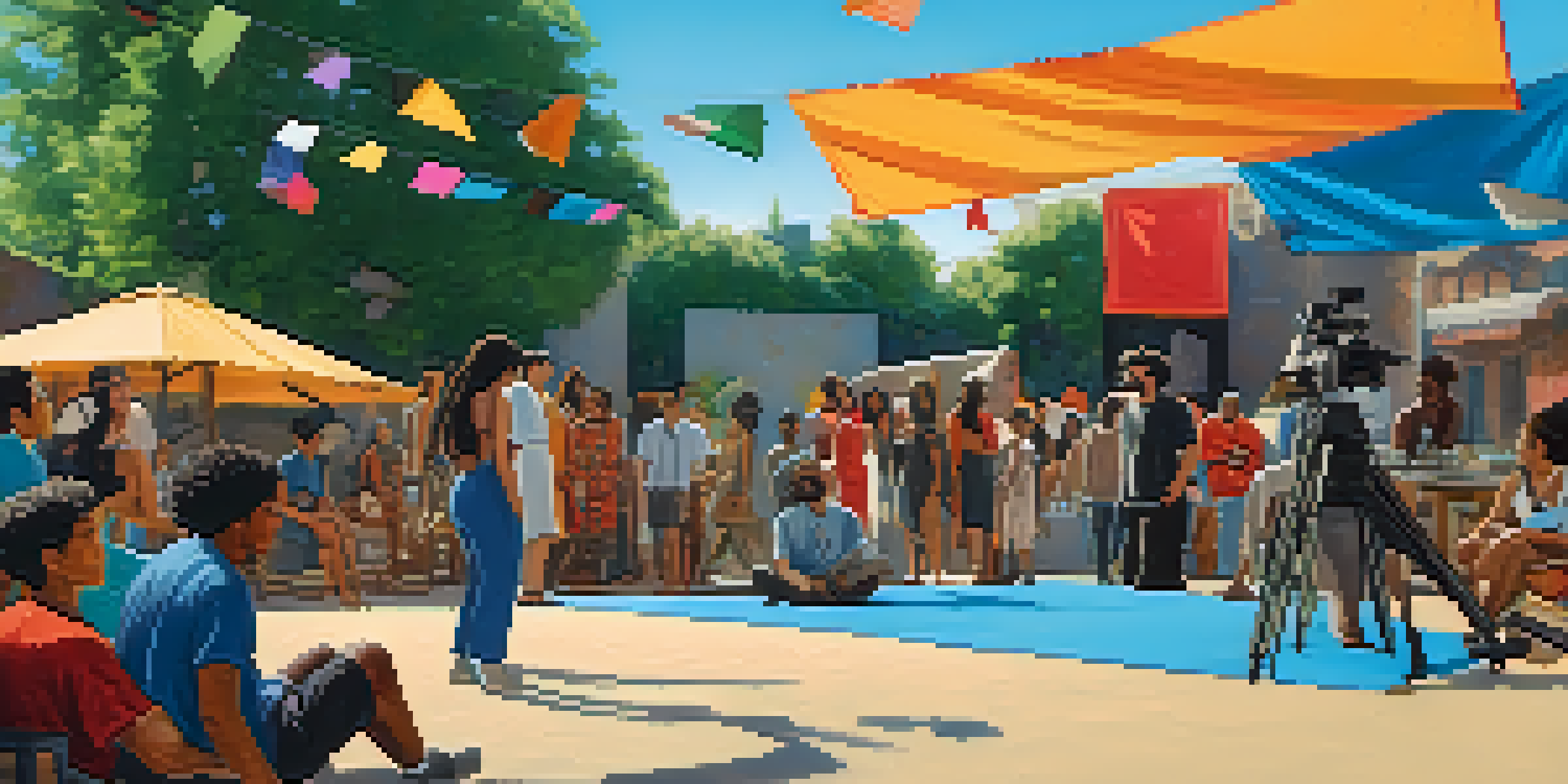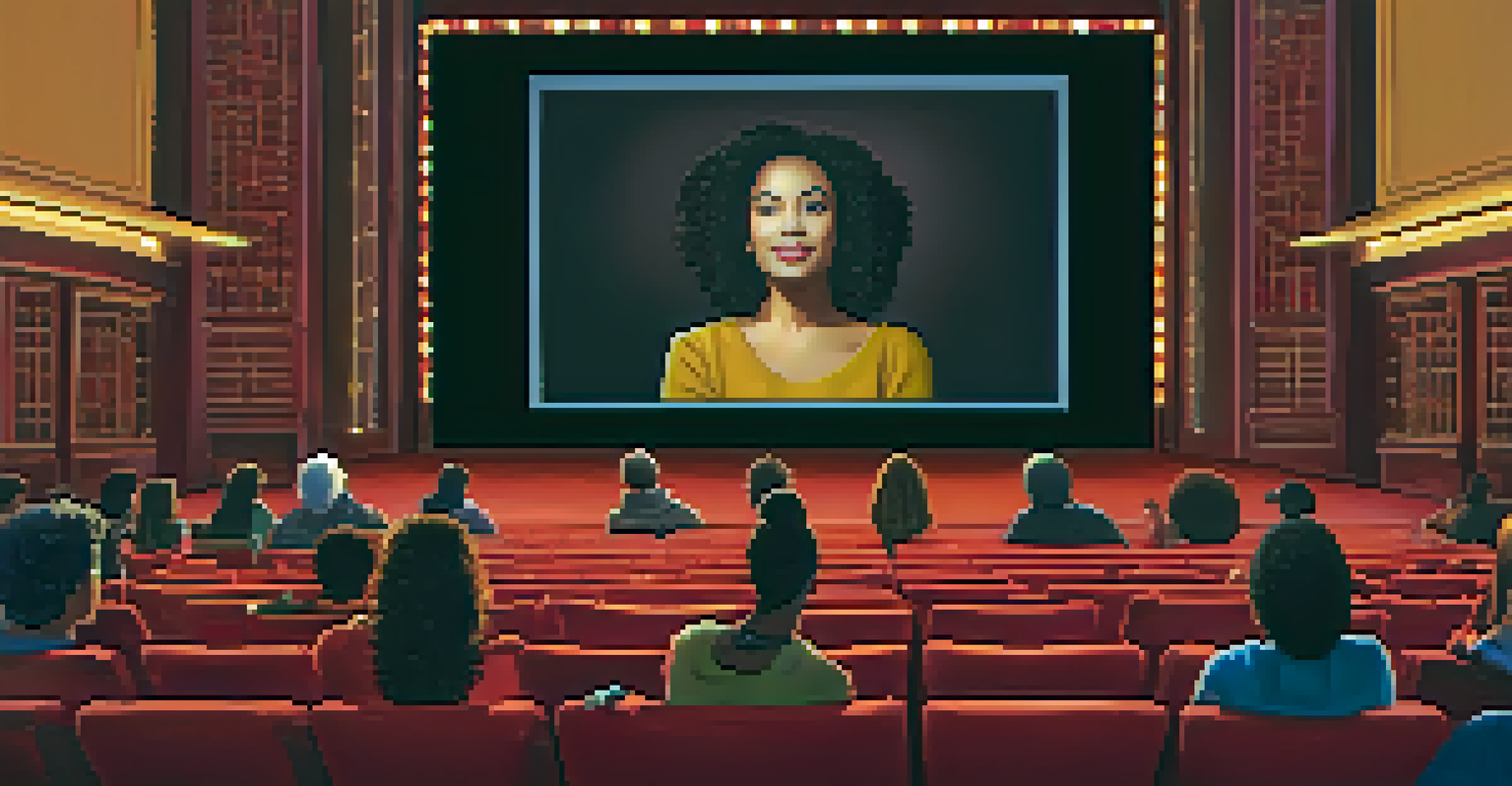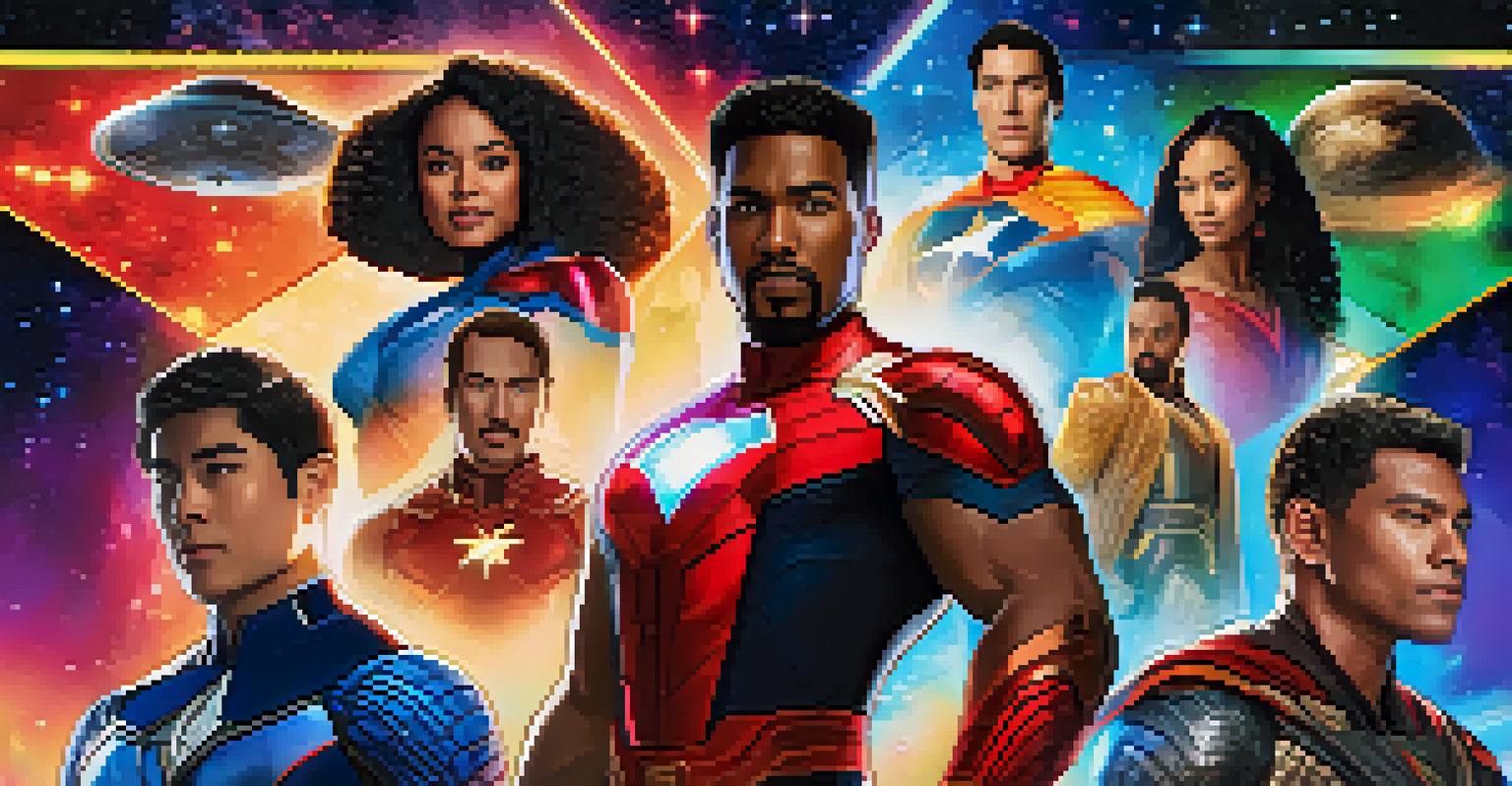Diversity in Cinematic Universes: Opportunities and Challenges

Understanding Diversity in Cinematic Universes
Diversity in cinematic universes refers to the inclusion of varied races, genders, sexual orientations, and cultural backgrounds in films. This representation not only enriches storytelling but also reflects the audience's diverse realities. As viewers, we crave narratives that resonate with our experiences, and diverse characters can make these stories more relatable and engaging.
Diversity is not a reason for division; it is a reason for unity.
When films embrace diversity, they can break away from stereotypes and depict more authentic human experiences. For instance, the portrayal of strong female leads or characters from underrepresented communities can challenge societal norms and inspire audiences. This shift encourages more inclusive storytelling, allowing everyone to see themselves represented on screen.
However, achieving true diversity is a complicated journey. It involves not just casting decisions but also the creation of well-rounded characters and narratives that do justice to their backgrounds. This complexity highlights the importance of thoughtful and respectful representation in filmmaking.
The Opportunities of Embracing Diversity
One of the biggest opportunities that come with embracing diversity is the potential for broader audience engagement. Different perspectives can attract new viewers who may have felt alienated by traditional storytelling. By catering to diverse audiences, filmmakers can tap into wider markets and generate greater box office success.

Moreover, diverse narratives can lead to innovative storytelling techniques. When creators draw from a variety of cultural experiences, they can introduce fresh ideas and themes that resonate on multiple levels. This innovation can lead to groundbreaking films that stand out in a crowded marketplace.
Diversity Enriches Storytelling
Including varied races, genders, and cultures in films makes stories more relatable and engaging for audiences.
Additionally, showcasing diverse characters allows for meaningful discussions about societal issues. Films that tackle themes of race, gender, or identity not only entertain but also educate audiences, prompting reflection and dialogue. This can foster a deeper understanding and empathy among viewers.
Challenges in Achieving True Representation
Despite the opportunities, there are significant challenges in achieving true representation in films. One major hurdle is the risk of tokenism, where diverse characters are included merely to meet a quota rather than being integral to the story. This can result in flat characters that fail to resonate with audiences, undermining the goal of authentic representation.
The power of storytelling is in its ability to bridge gaps between cultures and experiences.
Another challenge is the potential backlash from audiences who resist change. Some viewers may feel threatened by new narratives that challenge their long-held beliefs or preferences. This resistance can create a divide, making it difficult for filmmakers to push boundaries and explore diverse stories.
Finally, the industry itself often lacks the necessary diversity behind the scenes. Without diverse voices in writing, directing, and producing, even the best intentions can fall short. This highlights the importance of not just diverse casting but also diverse storytelling teams to create authentic narratives.
The Role of Audiences in Promoting Diversity
Audiences play a crucial role in shaping the film industry’s approach to diversity. By supporting films that feature diverse casts and stories, viewers can send a clear message to studios about the demand for representation. Box office success for these films often encourages more studios to invest in similar projects.
Social media has become a powerful platform for audiences to voice their opinions and advocate for diversity in film. Campaigns and discussions can go viral, influencing public perception and pressuring studios to prioritize inclusive storytelling. This grassroots activism highlights the collective power of audiences in driving change.
Challenges of Authentic Representation
Achieving true diversity in film involves overcoming tokenism, audience resistance, and the lack of diverse voices behind the scenes.
Moreover, audiences can engage in conversations about diversity, sharing their thoughts and experiences. This dialogue can lead to a greater appreciation for varied narratives and encourage more viewers to seek out diverse films, ultimately fostering a more inclusive cinematic landscape.
Successful Examples of Diverse Cinematic Universes
Several cinematic universes have successfully embraced diversity, setting a precedent for others to follow. For example, the Marvel Cinematic Universe (MCU) has made strides in featuring characters from various backgrounds, such as Black Panther’s T’Challa and Shang-Chi. These films not only showcased diverse superheroes but also celebrated their rich cultural heritages.
Similarly, animated films like Disney's Moana and Pixar's Coco have garnered acclaim for their authentic representations of Polynesian and Mexican cultures, respectively. These narratives highlight the importance of cultural accuracy and sensitivity in storytelling, proving that audiences are eager for genuine representation.
These successes demonstrate that when filmmakers commit to diversity, they can create captivating stories that resonate with a wide audience. Such films pave the way for more inclusive approaches, encouraging the industry to continue evolving.
The Future of Diversity in Cinematic Universes
Looking ahead, the future of diversity in cinematic universes appears promising but requires ongoing effort. As audiences continue to demand representation, studios will need to adapt and expand their storytelling approaches. This evolution presents an exciting opportunity for filmmakers to explore rich, multifaceted narratives that reflect the world we live in.
Emerging technologies and platforms are also playing a role in shaping diverse storytelling. Streaming services, for instance, have opened doors for independent filmmakers to share their unique perspectives and stories. This democratization of content creation allows for a broader range of voices to be heard in the cinematic landscape.
Audiences Drive Demand for Diversity
Support from viewers for diverse films influences studios to prioritize inclusive storytelling and fosters a more varied cinematic landscape.
Ultimately, the future of diversity in film hinges on collaboration, creativity, and commitment. By working together, audiences and filmmakers can create a cinematic universe that is not only diverse but also rich in authentic storytelling.
Conclusion: The Importance of Diverse Cinematic Stories
In conclusion, embracing diversity in cinematic universes presents both opportunities and challenges. While the journey toward authentic representation is complex, the rewards are undeniable. Films that reflect the richness of human experience can inspire empathy and understanding among audiences.
As we move forward, it’s crucial for filmmakers to remain committed to inclusivity in both front and behind the camera. By doing so, they can create compelling narratives that resonate with diverse audiences, fostering a sense of belonging and representation.

Ultimately, the importance of diverse cinematic stories lies in their ability to connect us all. When we see our stories told on screen, we recognize our shared humanity, paving the way for a more inclusive and understanding world.